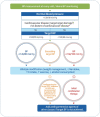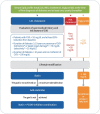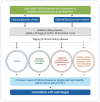2023 Clinical Practice Guidelines for Diabetes Mellitus of the Korean Diabetes Association
- PMID: 37793979
- PMCID: PMC10555541
- DOI: 10.4093/dmj.2023.0282
2023 Clinical Practice Guidelines for Diabetes Mellitus of the Korean Diabetes Association
Abstract
In May 2023, the Committee of Clinical Practice Guidelines of the Korean Diabetes Association published the revised clinical practice guidelines for Korean adults with diabetes and prediabetes. We incorporated the latest clinical research findings through a comprehensive systematic literature review and applied them in a manner suitable for the Korean population. These guidelines are designed for all healthcare providers nationwide, including physicians, diabetes experts, and certified diabetes educators who manage patients with diabetes or individuals at risk of developing diabetes. Based on recent changes in international guidelines and the results of a Korean epidemiological study, the recommended age for diabetes screening has been lowered. In collaboration with the relevant Korean medical societies, recently revised guidelines for managing hypertension and dyslipidemia in patients with diabetes have been incorporated into this guideline. An abridgment containing practical information on patient education and systematic management in the clinic was published separately.
Keywords: Diabetes mellitus; Practice guideline; Prediabetic state; Republic of Korea.
Conflict of interest statement
No potential conflict of interest relevant to this article was reported.
Figures





References
Publication types
MeSH terms
Grants and funding
LinkOut - more resources
Full Text Sources
Medical

